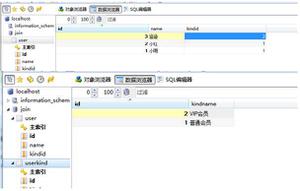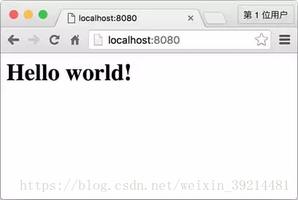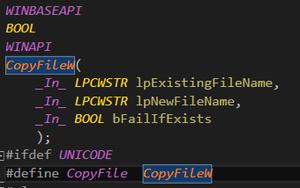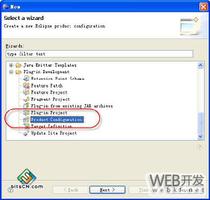从vue源码看props的用法
前言
平时写vue的时候知道 props 有很多种用法,今天我们来看看vue内部是怎么处理 props 中那么多的用法的。
vue提供的props的用法
1. 数组形式
props: ['name', 'value']
2. 对象形式
对象形式内部也提供了三种写法:
props: {
// 基础的类型检查
name: String,
// 多个可能的类型
value: [String, Number],
// 对象形式
id: {
type: Number,
required: true
}
}
props实现的原理
function normalizeProps (options: Object, vm: ?Component) {
const props = options.props
if (!props) return
const res = {}
let i, val, name
if (Array.isArray(props)) {
...
} else if (isPlainObject(props)) {
...
} else if (process.env.NODE_ENV !== 'production') {
...
}
options.props = res
}
normalizeProps 函数就是vue实际处理 props 的地方,从函数名的翻译我们可以看出该函数的功能就是标准化 props 的值。该函数主要分成3部分:① 从 options 对象中获取 props 的值并且定义一个res空对象;②几个 if ... else ,分别根据 props 值的不同类型来处理 res 对象;③ 用处理后的 res 对象覆盖原来 options 对象的 props 属性的值。
接下来看看那几个 if ... else 的代码:
if (Array.isArray(props)) {
i = props.length
while (i--) {
val = props[i]
if (typeof val === 'string') {
name = camelize(val)
res[name] = { type: null }
} else if (process.env.NODE_ENV !== 'production') {
warn('props must be strings when using array syntax.')
}
}
}
这个代码实际就是处理props的值为数组的情况,例如: props: ['name', 'value'] 。使用while遍历该数组,如果数组内元素的类型不是字符串并且不是生产环境,那么就抛错:‘props的值类型为数组时,数组里面的元素的类型就必须是字符串'。如果是字符串的情况下,使用 camelize 函数处理一下 val 的值,并且赋值给 name 变量。这里的 camelize 函数的实际作用就是将 '-' 转换为驼峰。 camelize 函数具体的实现方式在后面分析。然后在 res 对象上面添加一个为 name 变量的属性,该属性的值为空对象 { type: null } 。
props: ['name', 'value'] 这种写法经过上面的处理后就会变成了下面这样:
props: {
name: {
type: null
},
value: {
type: null
}
}
接下来看看下面这个 else if(isPlainObject(props)) ,这里的 isPlainObject 函数实际就是返回 props 的值是否为 object , isPlainObject 函数的具体实现我们也在后面分析。
else if (isPlainObject(props)) {
for (const key in props) {
val = props[key]
name = camelize(key)
res[name] = isPlainObject(val)
? val
: { type: val }
}
}
使用 for...in 遍历props对象,和上面一样使用 camelize 函数将 '-' 转换为驼峰。这里有个三目运算:
res[name] = isPlainObject(val) ? val : { type: val }
判断了一下 val 如果是 object ,那么在res对象上面添加一个为name变量的属性,并且将该属性的值设置为val。这个其实就是处理下面这种props的写法:
props: {
// 对象形式
id: {
type: Number,
required: true
}
}
如果 val 不是 object ,那么也在res对象上面添加一个为name变量的属性,并且将该属性的值设置为{ type: val }。这个其实就是处理下面这种props的写法:
props: {
// 基础的类型检查
name: String,
// 多个可能的类型
value: [String, Number],
}
经过处理后props会变成了下面这样:
props: {
name: {
type: String
},
value: {
type: [String, Number]
}
}
所以不管我们使用vue提供的 props 哪种写法,最终vue都会帮我们转换成下面这种类型:
props: {
name: {
...,
type: '类型'
}
}
接下来看看上面提到的util函数 isPlainObject ,先把源码贴出来。
const _toString = Object.prototype.toString
export function isPlainObject (obj: any): boolean {
return _toString.call(obj) === '[object Object]'
}
其实 Object.prototype.toString.call(obj) 的值为obj对象的类型。例如:
Object.prototype.toString.call({a: 1}) // [object Object]
Object.prototype.toString.call(new Date) // [object Date]
Object.prototype.toString.call([1]) // [object Array]
Object.prototype.toString.call(null) // [object Null]
接下来看看上面提到的util函数 camelize ,还是先把源码贴出来。
export function cached<F: Function> (fn: F): F {
const cache = Object.create(null)
return (function cachedFn (str: string) {
const hit = cache[str]
return hit || (cache[str] = fn(str))
}: any)
}
const camelizeRE = /-(\w)/g
export const camelize = cached((str: string): string => {
return str.replace(camelizeRE, (_, c) => c ? c.toUpperCase() : '')
})
这里定义了两个函数,分别是 cached 和 camelize ,其中 camelize 就是我们上面调用的, cached 是在 camelize 函数内部调用的。
我们先来看看 camelize 函数,其实 camelize 函数就是执行 cached 后返回的一个函数。调用 cached 时传入了一个箭头函数,箭头函数内部是调用了正则的 replace 方法,将传入的 str 变量中匹配 /-(\w)/g 的变成大写字母,并且返回 replace 后的值。(也就是将 - 转换成驼峰)。
再来看看 cached 函数,该函数传入的变量其实就是 camelize 那里的箭头函数,首先定义了一个 cache 空对象,然后直接返回了 cachedFn 函数。我们在外部调用 camelize(key) 时,其实就是执行了这里的了 cachedFn 函数, str 的值就是传入的 key 的值。很明显这里是一个闭包,可以在外部调用 camelize 函数的时候可以修改或者读取这里定义的 cache 对象的值。获取 cache 对象中 key 为 str 变量值的属性值赋值给 hit 变量。如果有hit变量的值,那么就直接返回hit的值,如果没有就执行 camelize 传入的箭头函数,并且将箭头函数的返回值赋值给 catche 对象的 str 属性。如果下次调用 camelize 函数时传入了相同的 str ,那么就不会执行箭头函数,直接返回闭包中的 cache 对象的 str 属性的值。这里是性能优化的一种手段。
例如:第一次调用 camelize('name') 后, cache 对象的值就变成了{name: 'name'}。然后在其他地方再次调用 camelize('name') 时再次执行 cachedFn 函数,此时 hit 变量的值为'name'。直接返回 hit 变量的值,不会执行传入的箭头函数。
以上是 从vue源码看props的用法 的全部内容, 来源链接: utcz.com/z/360066.html







![vue中[__ob__: Observer]的数组无法遍历](/wp-content/uploads/2020/10/8957318e7e1b596f583088b8a1c7eb4a.png)
![【JS】vue中为什么[__ob__: Observer]下无法取到数据](/wp-content/uploads/2020/12/bVYMPd.jpg)
